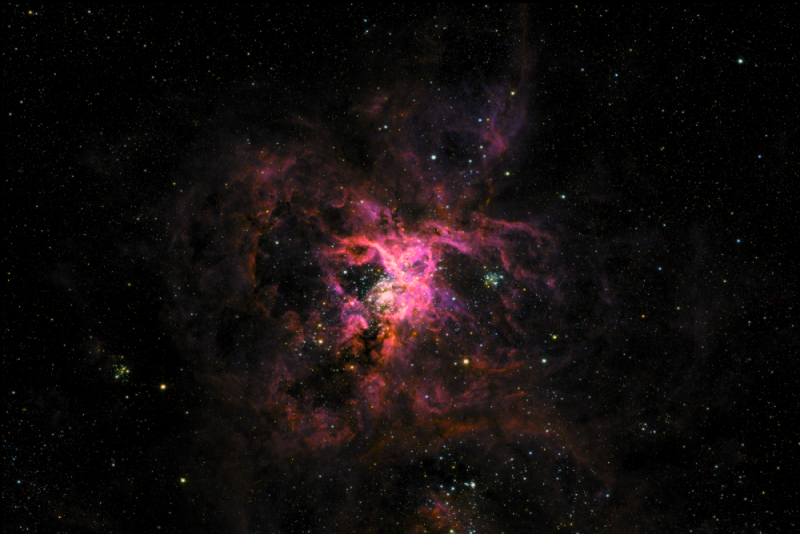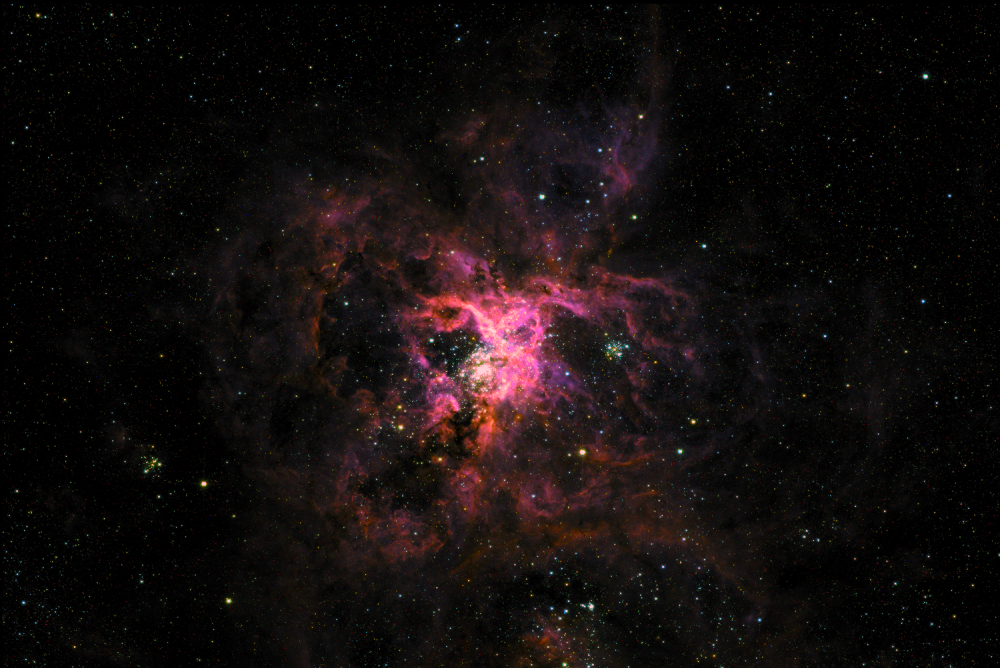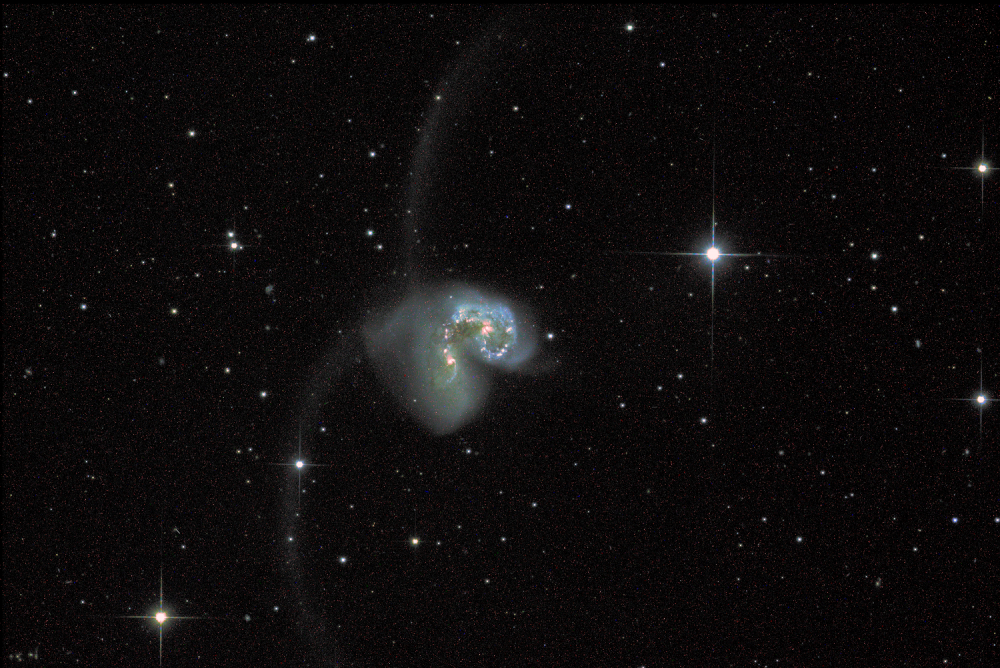A super pressure balloon built by students is cruising Earth’s skies to find dark matter

High altitude balloons have drawn a lot of fire lately. In February, the US military shot down a spy balloon potentially operated by the Chinese government and an “unidentified aerial phenomenon” that was later revealed to likely be a hobbyist balloon.
So, when people caught sight of another large balloon in the southern hemisphere in early May, there was concern it could be another spy device. Instead, it represents the future of astronomy: balloon-borne telescopes that peer deep into space without leaving the stratosphere.
“We’re looking up, not down,” says William Jones, a professor of physics at Princeton University and head of NASA’s Super Pressure Balloon Imaging Telescope (SuperBIT) team. Launched from Wānaka, New Zealand, on April 15, the nearly 10-foot-tall telescope has already circled the southern hemisphere four times on a football stadium-sized balloon made from polyethylene film. Its three onboard cameras also took stunning images of the Tarantula Nebula and Antennae galaxies to rival those of the Hubble Space Telescope. The findings from SuperBIT could help scientists unravel one of the greatest mysteries of the universe: the nature of dark matter, a theoretically invisible material only known from its gravitational effects on visible objects.
Scientists can use next-level observatories like the James Webb Space Telescope to investigate dark matter, relying on their large mirrors and positions outside Earth’s turbulent atmosphere to obtain pristine views of extremely distant celestial objects. But developing a space telescope and launching it on a powerful rocket is expensive. Lofting Hubble into orbit cost around $1.5 billion, for instance, and sending JWST to Lagrange point 2 cost nearly $10 billion.
SuperBIT took just $5 million to launch—a price cut stemming from the relative cheapness of balloons versus rockets and the lower barrier of entry for skilled workers to build the system.
“The whole thing is run by students. That’s what makes projects such as these so nimble and able to do so much with limited resources,” Jones says, referring to the SuperBIT collaborative between Princeton, the University of Durham in the UK, and the University of Toronto in Canada. “We have no professional engineers or technicians working on this full time—only the grad students have the luxury of being able to devote their full-time attention to the project.”
SuperBIT is not the first telescope carried aloft with a balloon: That honor goes to Stratoscope I, which was built in 1957 by another astronomy group at Princeton. But SuperBIT is one of a handful of new observatories made possible by 20 years of NASA research into so-called super pressure balloons. That work finally culminated in tests flights beginning in 2015 and the groundbreaking launch of SuperBIT.
Traditional balloons contain a lifting gas that expands as the sun heats it and as atmospheric pressure changes with altitude. That changes the volume of the envelope and, in turn, the balloon’s buoyancy, making it impossible to maintain a constant altitude over time.
Superpressure balloons keep the lifting gas, typically helium, pressurized inside a main envelope so that volume and buoyancy remain constant across day and night. The balloon then uses a smaller balloon—a ballonet—inside or beneath the main envelope as a ballast, filling or emptying the pocket of compressed air to change altitude and effectively steer the ship.
The super pressure balloon carrying SuperBIT can maintain an altitude of 108,000 feet (higher than 99.2 percent of Earth’s atmosphere) while carrying the 3,500-pound payload of scientific instruments. Unlike JWST and other missions, the purpose of the SuperBIT telescope isn’t to see farther or wider swaths of the universe or to detect exoplanets. Instead, it’s hunting for signs of a more ubiquitous and enigmatic entity.

“Dark matter is not made of any of the elements or particles that we are familiar with through everyday observations,” Jones says. That said, there’s a lot of it around us: It might make up about 27 percent of the universe. “We know this through the gravitational influence that it has on the usual matter—stars and gas, and the like—that we can see,” which make up around 5 percent of the universe, Jones explains.
Scientists estimate that the remaining 67 percent of the cosmos is made of dark energy, another largely mysterious material not to be confused with dark matter. Whereas the gravity of dark matter may help pull galaxies together and structure the way they populate the cosmos, dark energy may be responsible for the accelerating expansion of the entire universe.
Researchers probe extreme forces where dark matter might exist and calculate its presence by observing galactic clusters so massive their gravity bends the light that passes by them from more distant objects—a technique known as gravitational lensing. Astronomers can use this approach to turn galaxies into a sort of magnifying lens to see more distant objects than they normally could (something JWST excels at). It can also reveal the mass of the galactic clusters that make up the “lens,” including the amount of dark matter around them.
“After measuring how much dark matter there is, and where it is, we’re trying to figure out what dark matter is,” says Richard Massey, a member of the SuperBIT science team and a professor of physics at Durham University. “We do this by looking at the few special places in the universe where lumps of dark matter happen to be smashing into each other.”
Those places include the two large Antennae galaxies, which are in the process of colliding about 60 million light-years from Earth. Massey and others have studied the Antennae galaxies using Hubble, but it “gives it a field of view too small to see the titanic collisions of dark matter,” Massey says. “So, we had to build SuperBIT.”

Like Hubble, SuperBIT sees light in the visible to ultraviolet range, or 300- to 1,000-nanometer wavelengths. But while Hubble’s widest field of view is less than a tenth of degree, SuperBIT’s field of view is wider at half a degree, allowing it to image wider swaths of the sky at once. That’s despite it having a smaller mirror (half a meter in diameter compared to Hubble’s 1.5 meters).
SuperBIT has another advantage over space telescopes. With less time from development to deployment and without complex accessories needed to protect it from radiation, extreme temperatures, and space debris, the SuperBIT team was able to use far more advanced camera sensors than those on existing space telescopes. Where Hubble’s Wide Field Camera 3 contains a pair of 8-megapixel sensors, Jones says, SuperBIT contains a 60-megapixel sensor. The balloon-carried telescope is also designed to float down on a parachute after the end of each flight, which means scientists can update the technology regularly from the ground.
“We’re currently communicating with SuperBIT live, 24 hours a day, for the next 100 days,” Massey says. “It has just finished its fourth trip around the world, experiencing the southern lights, turbulence over the Andes, and the quiet cold above the middle of the Pacific Ocean.” The team expects to retrieve the system sometime in late August, likely in southern Argentina, according to Jones.
[Related on PopSci+: Alien-looking balloons might be the next weapon in the fight against wildfires]
SuperBIT may just be the beginning. NASA has already funded the development of a Gigapixel class Balloon Imaging Telescope (GigaBIT), which will sport a mirror as wide as Hubble’s. Not only is it expected to be cheaper than any space telescope sensing the same spectrum of light, GigaBIT would also be “much more powerful than anything likely to be put into space in the near term,” Jones says.
As to whether SuperBIT will crack the mystery of just what dark matter is, it’s too early to tell. After a few flights, the grad students will have to pore over the project’s findings.
“What will the [data] tell us? Who knows! That’s the excitement of it—and also the guilty secret,” Massey says. “After 2,000 years of science, we still have absolutely no idea what the two most common types of stuff in the universe are, or how they behave.”










